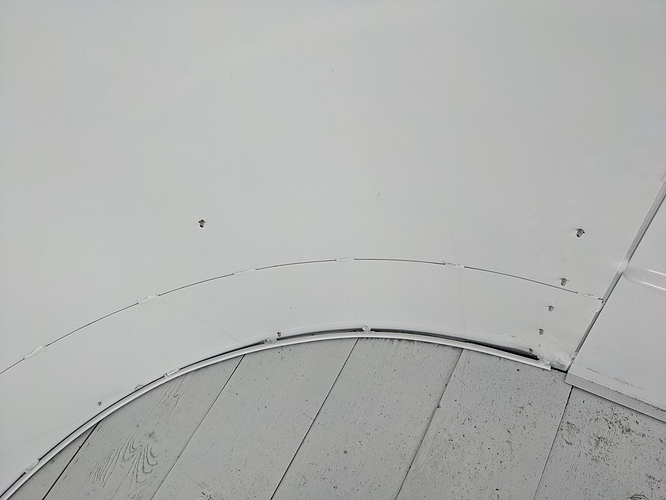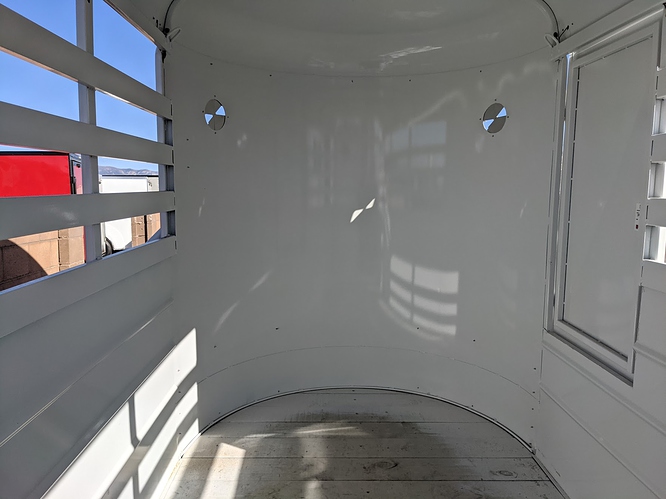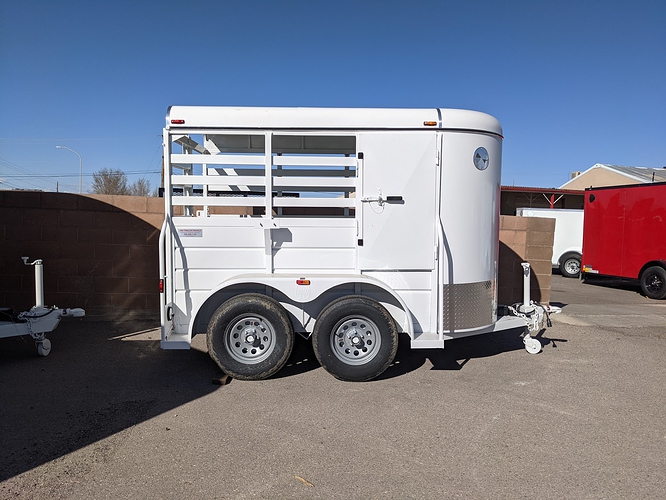We recently purchased a small stock trailer to use for hauling goats and a small pony. Most of my trailer experience has been with actual horse trailers – my last trailer was a Brenderup. This is my first experience buying a stock trailer. It just arrived and I went to pick it up, but during the walk-through, I noticed a bunch of exposed rivets sticking out in the front of the trailer, on the interior. Perhaps this is not unusual in a stock trailer…? To me, it looks like an accident waiting to happen if small animals are hauled loose and somebody gets crowded or pushed into the front of the trailer.
So… two questions. Is this normal for a new trailer coming straight from the manufacturer? If yes, what is typically done to cap or cover these rivets, or do you just cross your fingers and toes and hope and pray that the animals steer clear of the pokey points?
The sales rep that did the walk-through with me said he’d speak with his team to see what they can do. For now, the trailer is remaining on-site and I hope to hear from them soon, but in the meantime I wanted to do some research and see if I can figure out a plan of action in case their response is that it is what it is.






 ) of silicone caulk over the rivets. Won’t look quite as nice as smooth rivets would, but it’ll be a quick and easy fix, it won’t affect the warranty, and it’ll make it safe for the small livestock we’ll be hauling. Thanks for the tip to run a bead on the edge of the diamond plate and the front trim, I’ll definitely get that done while I have the caulk out!
) of silicone caulk over the rivets. Won’t look quite as nice as smooth rivets would, but it’ll be a quick and easy fix, it won’t affect the warranty, and it’ll make it safe for the small livestock we’ll be hauling. Thanks for the tip to run a bead on the edge of the diamond plate and the front trim, I’ll definitely get that done while I have the caulk out!
